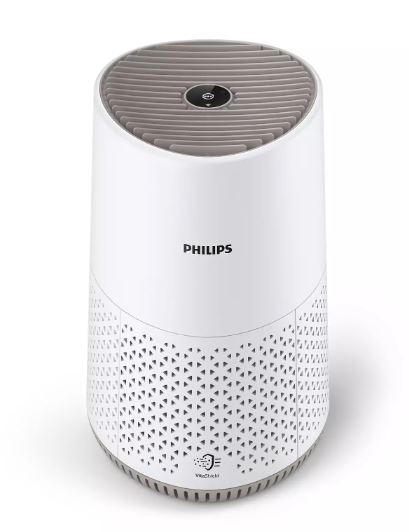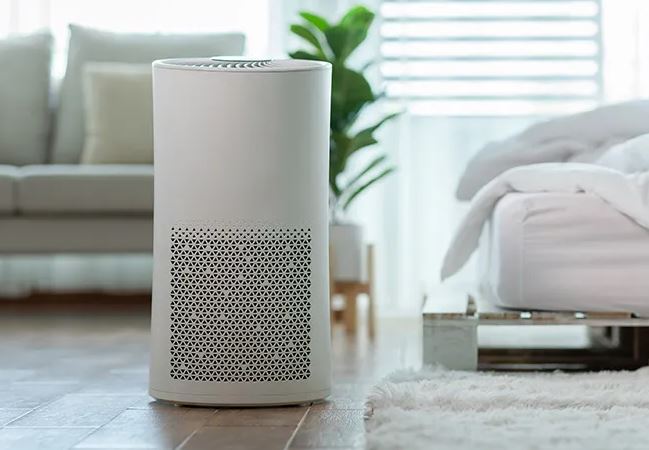Beyond Fresh Air: Unexpected Benefits of Using Air Purifiers
Beyond Fresh Air: Unexpected Benefits of Using Air Purifiers
Blog Article
In a health-conscious world, the quality of the air we breathe has taken center stage for individuals across the globe. With growing concerns over air pollution and a deeper insight of the effects of indoor pollutants on our health, it's no surprise that the demand for air purifiers is on the rise.
Air purifiers are machines that clean the air of pollutants in a room, promoting healthier indoor air. They are particularly beneficial for people with allergies, asthma, or other respiratory issues as they can significantly lower the levels of allergens, pollutants, and irritants in the air. Healthy individuals, too can benefit from air purifiers, as they offer peace of mind and an extra layer of protection against airborne illnesses.
This article will explore in detail the fascinating realm of air purifiers, exploring their benefits, the variety of options on the market, crucial aspects to think about when making a purchasing decision, and optimizing your purifier's performance. By the end, you should have a thorough grasp of air purifiers and be able to decide confidently about whether investing in one is the smart move for you and your family.

Decoding Air Pollutants and Their Impact on Health
To understand why air purifiers are essential, it's key to comprehending the kinds of pollutants they target and the potential consequences of exposure to these contaminants.
Indoor air pollutants can be broadly categorized into three main types:
- Particulate Contaminants: This includes tiny solid and liquid particles floating in the atmosphere. Examples include pollen, smoke, dust, pet dander, and mold spores, to name a few. Particulate matter can cause respiratory issues and trigger allergic reactions.
- Volatile Organic Compounds (VOCs): VOCs are gaseous compounds released from solids and liquids. Sources of VOCs include paints, cleaning products, aerosol sprays, and pesticides. Exposure to VOCs can lead to eye, nose, throat irritation, headaches, and stomach discomfort.
- Understanding Biological Contaminants: These include bacteria, viruses, mold, and mildew. They can cause a spectrum of health concerns, from mild allergic reactions to severe infections.
The effects of these pollutants on human health can greatly vary. For those suffering from respiratory ailments or weakened immune systems, exposure to indoor air pollutants can lead to significant health complications. Even for healthy people, long-term exposure to certain pollutants can contribute to the development of respiratory issues and other health problems over time.

The Science Behind Air Purifiers
Air purifiers use a combination of physical and chemical processes to capture and remove pollutants from the air. Understanding the basic mechanisms employed by purifiers will help you appreciate their effectiveness and the variety of options on the market.
Here are the key processes and technologies used in air purifiers:
- The Power of Mechanical Filtration: This is the predominant technique used in air purifiers. It involves using filters to trap particles as air is passed through the filtration system. The filter composition can differ, each designed to trap particular particle types. For example:
- Pre-filters: These are usually the first line of attack, trapping bigger contaminants like dust, hair, and similar larger particles.
- HEPA Filters: The Gold Standard: HEPA filters are exceptionally efficient at trapping ultrafine particles, including dust mites, pollen, bacteria, and viruses. To be labeled a bona fide HEPA filter, it must trap a minimum of 99.97% of particles down to 0.3 microns in size.
- charcoal filtration: These filters are designed to adsorb odors, VOCs, and gaseous pollutants.
- Ionizers: Charging Ahead: Ionizers use electricity to create an abundance of negative ions, which attach themselves to particles in the air. The charged particles are drawn to nearby surfaces or the purifier itself.
- Ozone: A Powerful Purifier: Some air purifiers use ozone as a potent disinfectant to destroy contaminants. While effective, excessive ozone exposure carries risks so these types of purifiers should be used with care and only when no one is present.
- Ultraviolet (UV) Light: UV light can be used to destroy biological contaminants like bacteria, viruses, and mold spores. UV light is commonly paired with filtration to eliminate particles, while UV light ensures any remaining biological contaminants are destroyed.
Choosing the Right Air Purifier
With a wide array of options available, selecting the right air purifier can be a challenging endeavor. It's important to consider several factors to ensure you make the best decision for your particular needs and room size.
Here are some key considerations:
- Considering Room Size: Air purifiers are typically rated for specific room sizes, so it's important to choose a model that can adequately cater to the room size. Most purifiers will list a suggested room size or CADR rating, which indicates the volume of filtered air delivered per minute.
- Targeted Pollutants: Identify the types of pollutants you want to target. If you suffer from allergies, look for a purifier with a true HEPA filter. For odor removal, consider a model with a carbon filter. If you're concerned about bacteria and viruses, a purifier with UV-C light might be best.
- Quiet Operation: Air purifiers can produce different noise levels, so if you plan to use it in a quiet bedroom or tranquil space, look for models with a quiet mode for undisturbed rest.
- Maintaining Performance: Consider the long-term expenses and upkeep of the purifier. HEPA filtration systems may need periodic replacement, depending on use and environmental factors. Remember to budget for filter replacements when making your choice.
- Enhancing Your Experience: Many purifiers offer intelligent features like wireless connectivity, air quality sensors, and smart modes, allowing convenient remote access and monitoring. These features can improve your purifier's performance and ease of use.
Optimizing Performance of Your Air Purifier
Once you've chosen and set up your air purifier, there are several things you can do to ensure it operates at maximum efficiency and delivers the greatest advantages:
- Place it in the Right Location: Position your purifier in an central location, free from obstacles, to ensure efficient air circulation. Avoid placing it near windows or doors as drafts can interfere with its performance.
- Keep it Running: For the best results, it's recommended to run your purifier regularly. Many models have low-energy settings or automatic modes that respond to air quality changes, so you can maintain fresh air without excessive energy costs.
- Regular Filter Care: Regularly follow the manufacturer's filter replacement guidelines. Over time, filters become clogged with particles, reducing the purifier's efficiency. Set a reminder for filter changes so you don't forget.
- Limiting Indoor Pollutants: Alongside using an air purifier, take steps to reduce indoor pollutants. This could include regularly vacuuming and dusting, using natural cleaning products, and minimizing the use of strong chemicals or aerosols. Report this page